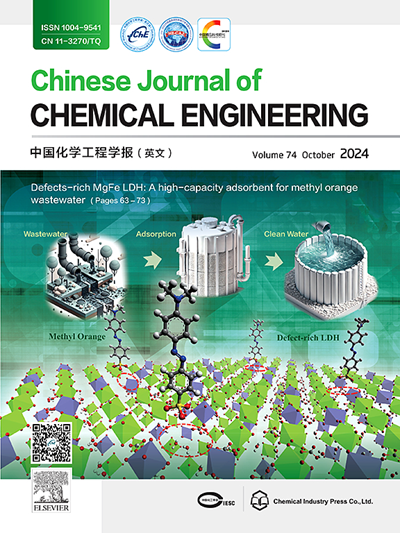Green corrosion inhibition of mild steel in acidic media using Datura stramonium seed extract: A study for sustainable engineering applications
IF 3.7
3区 工程技术
Q2 ENGINEERING, CHEMICAL
引用次数: 0
Abstract
This study investigates the corrosion inhibition potential of Datura stramonium seed extracts on mild steel in 1.0 mol·L−1 HCl and 0.5 mol·L−1 H2SO4, utilizing both ethanolic and aqueous extracts as eco-friendly inhibitors. Electrochemical techniques, thermodynamic studies, and quantum chemical calculations were employed to evaluate the adsorption mechanism and inhibitory action at the metal/electrolyte interface. Maximum inhibition efficiencies of 93.1% in HCl and 97.7% in H2SO4 were achieved with the ethanolic extract at a concentration of 0.2 g·L−1, while the aqueous extract demonstrated 93.8% inhibition in HCl and 96.6% in H2SO4. Polarization curves indicated mixed-type inhibition with a slight anodic bias. The thermodynamic analysis of two extracts in both environments indicated that the Kads increased and that the ΔGads were close to −40 kJ·mol−1, suggesting that the adsorption followed the Langmuir isotherm, indicating a combination of physical and chemical adsorption. SEM/EDX analysis confirmed the formation of a protective layer, while quantum chemical studies further validated strong adsorption, evidenced by a low ΔE of 2.396 eV and an adsorption energy of −878 kcal·mol−1 (1 kcal·mol−1 = 4.18 kJ·mol−1). These results demonstrate that Datura stramonium extracts are promising inhibitors, particularly in sulfuric acid, for industrial applications. Reason: Improved clarity, vocabulary, and technical accuracy while maintaining the original meaning.

求助全文
约1分钟内获得全文
求助全文
来源期刊

Chinese Journal of Chemical Engineering
工程技术-工程:化工
CiteScore
6.60
自引率
5.30%
发文量
4309
审稿时长
31 days
期刊介绍:
The Chinese Journal of Chemical Engineering (Monthly, started in 1982) is the official journal of the Chemical Industry and Engineering Society of China and published by the Chemical Industry Press Co. Ltd. The aim of the journal is to develop the international exchange of scientific and technical information in the field of chemical engineering. It publishes original research papers that cover the major advancements and achievements in chemical engineering in China as well as some articles from overseas contributors.
The topics of journal include chemical engineering, chemical technology, biochemical engineering, energy and environmental engineering and other relevant fields. Papers are published on the basis of their relevance to theoretical research, practical application or potential uses in the industry as Research Papers, Communications, Reviews and Perspectives. Prominent domestic and overseas chemical experts and scholars have been invited to form an International Advisory Board and the Editorial Committee. It enjoys recognition among Chinese academia and industry as a reliable source of information of what is going on in chemical engineering research, both domestic and abroad.
 求助内容:
求助内容: 应助结果提醒方式:
应助结果提醒方式:


